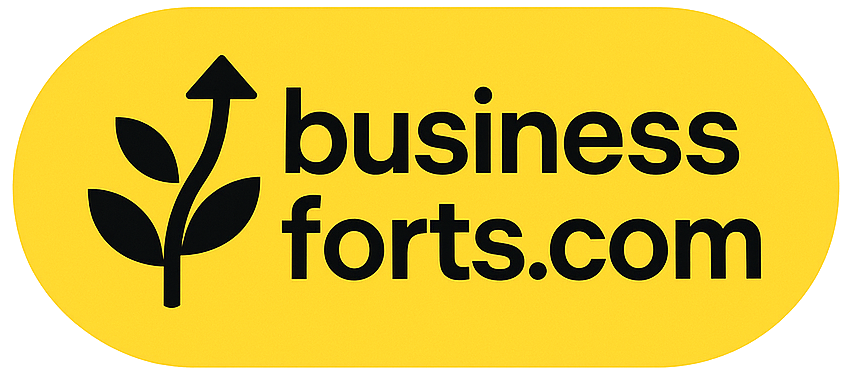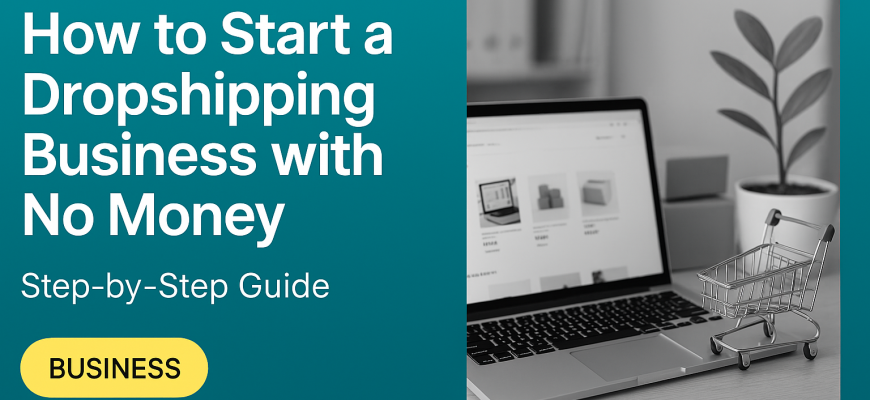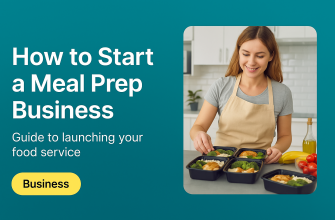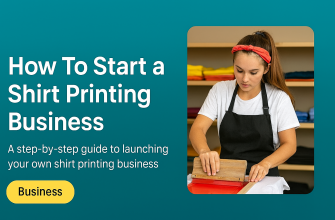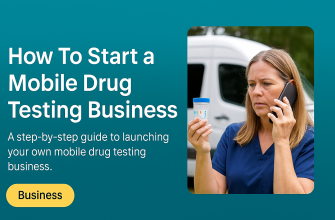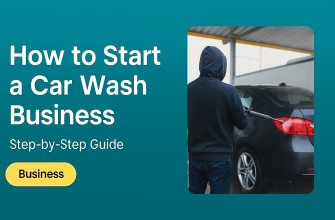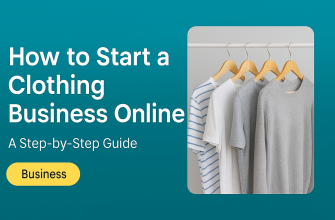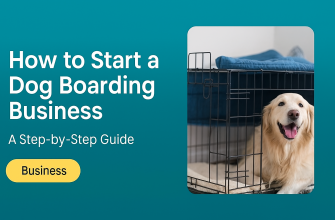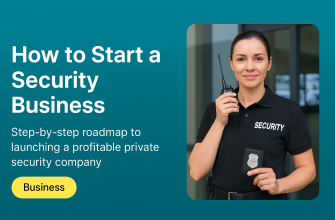Starting a business without capital might sound impossible, but dropshipping makes it achievable. Dropshipping is an e-commerce model where you don’t need to buy or hold any inventory upfront – you act as the middle-woman between the customer and supplier. This means you only pay for a product after a customer has ordered it, using the customer’s payment to cover the cost. With clever use of free tools and a lot of passion, many women have launched successful dropshipping stores from scratch. In this guide, we’ll explain what dropshipping is, show you step-by-step how to start dropshipping with no money, recommend free platforms and tools to use, and share inspiring success stories of women entrepreneurs. Let’s turn your business dream into reality – without breaking the bank!
- What is Dropshipping? (Dropshipping Explained in Simple Terms)
- How to Start Dropshipping with No Money: Step-by-Step
- Step 1: Choose a Niche and Winning Product
- Step 2: Find a Reliable Supplier (for Free)
- Step 3: Set Up Your Online Store for Free (Platform Options)
- Step 4: Add Your Products and Build Your Brand
- Step 5: Market Your Store with Free Strategies (TikTok, Instagram, and More)
- Step 6: Fulfill Orders Promptly and Provide Great Customer Service
- Success Stories: Women Who Made It Big (Starting Small)
- Tips for Success in Your Zero-Budget Dropshipping Journey
- Conclusion: Your Turn to Build Your Dream (No Excuses!)
What is Dropshipping? (Dropshipping Explained in Simple Terms)
Dropshipping is a way of selling products online without ever stocking inventory yourself. Here’s how it works in plain language:
-
You set up an online store (for example, a simple website or marketplace listing) and display products for sale.
-
Customers place an order and pay you for the product.
-
You forward the order to a supplier (often via an app or manually on a supplier’s site like AliExpress), and pay the supplier’s wholesale price.
-
The supplier ships the product directly to your customer on your behalf.
In essence, you are the storefront and customer-facing part of the business, while a third-party supplier handles stocking and shipping. Your profit is the difference between what the customer paid and what you paid the supplier.
Why is this model great for someone with no money? Because you don’t buy any products until you’ve already made a sale. There’s no need to invest in bulk inventory. You can literally start with $0 in inventory costs – if a product doesn’t sell, it costs you nothing. Upfront expenses like setting up a website can also be minimized or eliminated using free trials and tools (we’ll cover those next). Dropshipping has a very low financial barrier to entry, making it an ideal first business for women who have big entrepreneurial dreams but a small budget.
How to Start Dropshipping with No Money: Step-by-Step
Starting a dropshipping business with no money does require effort and creativity instead of cash. You’ll be investing time and hustle in place of dollars. Below is a step-by-step roadmap to get you started without spending a cent:
Step 1: Choose a Niche and Winning Product
The first step is deciding what kinds of products you want to sell. Rather than offering “everything for everyone,” focus on a niche – a specific category or audience – that you understand and that has demand. For example, you might choose fitness apparel for new moms, eco-friendly kitchen gadgets, or stylish home office decor. Picking a niche helps you target your marketing and stand out from larger retailers.
Research your niche for free using tools like Google Trends (to see if interest is trending up or down), browsing Amazon or Etsy best-seller lists, and scrolling through Pinterest or TikTok to spot trending products. You can also use the AliExpress Dropshipping Center (free with an AliExpress account) to find products that are hot sellers. The goal is to find a “winning product” – something that people want, that isn’t already everywhere, and ideally that you feel excited about selling.
Tip: Choose a niche you’re personally interested in or have knowledge about. Your passion will shine through in how you promote the products, and it will keep you motivated to stick with it. For example, if you love skincare, starting a dropshipping store for affordable K-beauty products might be more fun and authentic for you than selling random electronics.
Step 2: Find a Reliable Supplier (for Free)
Once you have a product idea, you need a supplier who will provide the product and ship it to your customers. Since we’re starting with no money, look for suppliers that don’t require any upfront fees or bulk purchases. One popular free option is AliExpress, a massive online marketplace of manufacturers (mostly in China) that offer millions of products with drop shipping-friendly terms. You can browse AliExpress for your product and check that the supplier has good reviews and reasonable shipping times. When a customer orders, you’ll simply purchase the item on AliExpress and enter your customer’s address for delivery – it’s straightforward and you only pay after you get paid by the customer.
Other supplier options include print-on-demand companies like Printful, which let you sell custom-designed products (t-shirts, mugs, etc.) with no upfront cost – they print and ship each item on demand when an order comes in. Printful, for example, is free to sign up and integrates with many store platforms. There are also supplier directories (like Spocket or CJ Dropshipping) that have free plans to find products shipped from various locations. Just make sure any supplier you use is reliable: delivery speed, product quality, and communication are key. A reliable supplier is essentially your business partner in dropshipping, so do a bit of homework reading reviews or testing their service if possible.
Step 3: Set Up Your Online Store for Free (Platform Options)
Now that you have products and a supplier, you need a place to sell – your online storefront. The good news is you can create an online store without money by using free trials or free platforms:
-
Shopify Free Trial: Shopify is one of the easiest e-commerce platforms to start with. It offers a free trial (often 14 days) to build your store without entering payment info. You can use those two weeks to set up your entire website and even start selling. (Shopify now also frequently offers promotions like a $1/month for 3 months deal after the trial, which is very affordable.) Sign up on Shopify’s trial and choose a simple template for your store. It requires no coding – just drag-and-drop your logo, write a description, and add products. Many successful dropshippers started with a Shopify trial while spending $0 up front.
-
Free E-commerce Platforms: If you need more time or don’t want to worry about a trial ending, consider platforms that have free plans. For example, Big Cartel has a free plan for up to 5 products – perfect for starting small. Ecwid also has a free tier for a basic online store. These allow you to run a simple shop at no cost (though with some limitations in features). Another route is WooCommerce (a free plugin for WordPress) – the plugin is free and open-source, but note you’d need a website host which usually costs a few dollars a month, so it’s not 100% free unless you find free hosting.
-
Online Marketplaces: If building a website feels overwhelming, you can start by selling through a marketplace or social platform at no cost. For instance, you could list your items on Facebook Marketplace or in relevant Facebook buy/sell groups (free exposure), or set up a free listing on Etsy if your products are handmade or vintage (Etsy charges small fees per sale but no upfront store fee). You could even take orders via Instagram DM or a simple Google Form to start – it might sound amateur, but if you have an audience already, this is essentially free and you can transition to a proper store later.
Whichever route you choose, keep initial costs zero. You can use a .my subdomain (free) instead of buying a custom domain right away. Use free themes and apps initially. The key is to get your store online and functional without spending money. It might not be fancy at first, but you can improve it as you go.
Step 4: Add Your Products and Build Your Brand
With your store framework in place, it’s time to populate it with your chosen products. If you’re using Shopify, you can add products manually or use a free app to import products from AliExpress. One popular method is to use a tool like DSers (which replaced the old Oberlo app) – DSers has a free plan and lets you import AliExpress product listings into your Shopify store with one click, automatically syncing price, images, and details. This saves time compared to entering everything yourself. Alternatively, you can copy product info from the supplier’s site (make sure to rewrite descriptions in your own voice for a professional touch).
Product presentation tips (for no-cost): Use the supplier’s images to start, but remove any logos or watermarks. Write a clear, enticing product description highlighting benefits of the product for your target customer. Since you’re aiming at a specific niche, tailor the language to what that audience cares about. For example, if selling fitness gear to moms, emphasize convenience, kid-friendly features, or time-saving aspects. These personal touches cost nothing but make your store feel trustworthy and unique (remember, even without money, adding value and authenticity is crucial to stand out).
Also, design some basic branding for free: create a simple logo using Canva (a free design tool with templates), choose a consistent color scheme, and write an About Us that shares your story or mission. Shoppers love to support small businesses, especially women-owned startups, so tell them who you are and why you started this store. All of this helps build credibility at no financial cost.
Finally, set your product prices such that you cover the supplier cost and make a profit. Since you have no other major expenses, your margin can be whatever the market supports. Research what similar items sell for to price competitively. You’re almost ready to launch!
Step 5: Market Your Store with Free Strategies (TikTok, Instagram, and More)
Now for the part that really determines your success: getting customers. With no money for ads, you’ll rely on organic (free) marketing – but don’t worry, many dropshipping businesses have grown huge with zero ad budget by leveraging social media and creativity. Here are several free marketing strategies to start with:
-
TikTok Organic Marketing: TikTok is a goldmine for free exposure right now. Create a TikTok account for your store or niche and start making short, engaging videos around your product or related content. You don’t need professional equipment – your smartphone is enough. For example, if your niche is kitchen gadgets, make TikToks showing a cool gadget in action, a before-and-after, or a funny cooking hack. TikTok’s algorithm can show your content to millions if it resonates. In fact, some entrepreneurs have gone viral on TikTok and made thousands in sales literally overnight without spending a penny on advertising. Use relevant hashtags (even #TikTokMadeMeBuyIt), jump on trends if they fit your niche, and post consistently. One viral video can launch your business sky-high.
-
Instagram & Pinterest: On Instagram, you can post product photos, how-to-use videos on Reels, and inspirational content related to your niche. Engage with your followers, use niche hashtags (e.g., #mompreneur #fitnesshacks), and even collaborate with other women entrepreneurs by shoutouts. Instagram Stories are great for behind-the-scenes peeks or quick polls (“Which new design do you like?”) to involve your audience. Pinterest works well if your audience is there – create pinboards featuring your product images and other inspiring images related to your brand aesthetic. Pinterest pins can drive traffic over time as they get re-shared.
-
Facebook Groups and Communities: Join Facebook groups or online forums related to your niche (for instance, a parenting group if you sell baby products, or a travel forum if you sell travel accessories). Participate genuinely in discussions and subtly mention your product or store when appropriate (without spamming). For example, if someone asks “Does anyone know where I can get a cute home office organizer?”, you could reply with helpful advice and mention you happen to sell a stylish organizer with a link. By being a helpful community member first, you build trust and interest in what you offer. Reddit can be similar – find a subreddit for your niche and contribute.
-
Start a Simple Blog or Email List: If you enjoy writing, consider adding a blog section to your site where you post tips or stories related to your niche. This can attract organic traffic via SEO (search engines) over time. For example, write a post like “10 Budget-Friendly Decor Tips for Cozy Apartments” if you sell home decor; within it, naturally mention and link your products. It costs only your time. Also, encourage visitors to join your email list (you can set up a free account on Mailchimp for up to a certain number of subscribers). Email marketing lets you reach out with product updates, sales, or useful content, and it’s essentially free marketing.
-
Influencer Outreach (Budget-Friendly): Big influencers often charge money, but you can leverage micro-influencers for free or product exchange. Identify a few small influencers (perhaps 1,000–10,000 followers) in your niche on Instagram or TikTok. These might be other women who share content relevant to your product. Reach out politely and offer to send a free sample of your product in exchange for an honest review or a post. For instance, if you sell a yoga accessory, find a yoga enthusiast with a modest following and ask if she’d like to try it. Many will be happy to, as free product is often enough compensation at that level. This can get your product in front of a targeted audience without any cash outlay – essentially trading product cost for promotion. Influencer marketing helped two female dropshippers, Sarah and Audrey, skyrocket their store to over $1 million in sales in a matter of weeks during lockdowns by leveraging Instagram influencers instead of paid Facebook ads. You can start small with micro-influencers and grow from there.
Whatever channels you choose, the core idea is to be social, consistent, and value-driven in your marketing. Share useful or entertaining content, not just “buy this” posts. Engage with comments, build a community around your brand. It costs $0 but does require dedication. Over time, this kind of organic marketing can snowball your business.
Step 6: Fulfill Orders Promptly and Provide Great Customer Service
This step happens once your marketing pays off and orders start coming in (hooray!). Even though you have no upfront investment, you want to treat this like a real business so customers come back and refer others. Here’s what to do when you get sales:
-
Order from the Supplier Quickly: As soon as a customer places an order and pays you, order the exact item from your supplier (e.g., add to cart on AliExpress and check out with the customer’s shipping address). The faster the supplier processes it, the sooner your customer will get it. Prompt fulfillment leads to happy customers and good reviews. Many suppliers will send you a tracking number – be sure to pass that on to your customer so they can track their package.
-
Communicate with Customers: Since shipping (especially from overseas suppliers) can take a couple of weeks, it’s important to set the right expectation on your website and follow up with customers. Let them know an order is confirmed and being shipped, provide the tracking link, and thank them for supporting your small business. If a customer has a question or a problem, respond as quickly and helpfully as you can. Great customer service can be a secret weapon for new dropshippers – it builds trust and loyalty. As a woman business owner, you can bring your empathy and attentiveness into customer service to really stand out from big-box competitors.
-
Handle Returns/Issues Gracefully: Sometimes a customer may want to return an item or an issue arises (item lost in mail, etc.). Even though you’ll have to coordinate with the supplier, always take responsibility and keep the customer informed. Most AliExpress sellers will refund or resend for lost packages. For product quality issues, you might refund the customer and take the loss (since you didn’t invest upfront, it’s often a small hit and a learning experience). A smooth recovery can turn an unhappy customer into a loyal one.
-
Iterate and Improve: Use early sales to gather feedback. Which products sell the best? What questions do customers ask? This information is free and invaluable – it helps you refine your product selection, tweak descriptions, or maybe choose a faster supplier if needed. As you make some profit, you can reinvest a bit of money into improvements like buying a custom domain for a more professional look, or even testing a small ad campaign to scale up. But remember, plenty of dropshipping businesses have grown purely reinvesting their revenue without outside funding.
By following these steps, you’ve essentially launched a business with virtually no out-of-pocket costs. It’s all about using free resources, being resourceful, and putting in consistent effort. Now, let’s get you inspired with some success examples!
Success Stories: Women Who Made It Big (Starting Small)
To show you that this is all truly possible, let’s look at a couple of inspiring dropshipping success stories, including women entrepreneurs who started from zero:
-
Sarah and Audrey – $1 Million via Free Marketing: Sarah and Audrey are two women who each started dropshipping businesses on their own, then joined forces in 2019. Instead of following the crowd and spending on Facebook ads, they tapped into influencer marketing on Instagram to promote their products for free (or low cost). By partnering with content creators and getting their products featured in Instagram Stories, they rapidly expanded their brand’s reach. During the 2020 lockdowns, their strategy paid off massively – they generated over $1,000,000 in sales in just a few weeks thanks to a surge of traffic from influencers. Their story shows that understanding your audience and cleverly leveraging social media can outperform even big ad budgets. Two key takeaways from Sarah and Audrey: 1) know where your customers hang out online and meet them there, and 2) don’t be afraid to reach out to many potential partners – they reportedly sent out up to 200 emails a day to influencers until they found the right matches for their brand. Persistence and creative marketing were their investment instead of money.
-
TikTok Solopreneur – $4K Overnight with $0 Ads: In a recent case study, one entrepreneur demonstrated the power of TikTok for dropshipping. She posted a series of TikTok videos showcasing her product (a quirky home gadget) in fun, relatable scenarios. Thanks to TikTok’s viral nature, one of her videos exploded in popularity. The result? She woke up to over $4,000 in sales within 12 hours, all without spending a single dollar on advertising. The only “investment” she made was time – creating engaging content and understanding TikTok trends. This story is a testament that content can be currency in the social media age. As a woman entrepreneur, maybe you have a creative flair or a story to tell – use it on platforms like TikTok or Instagram Reels, and you could achieve similar results with zero financial cost.
-
Kitty’s Slow-and-Steady Growth: Not every success is overnight, and that’s okay! Kitty, a female entrepreneur from New Zealand, started her dropshipping store as a side project with no prior business experience. She focused on her passion for fashion accessories and building a brand community. Over about 3 years, she grew her store to over $45,000 in sales. It wasn’t instant riches, but it provided a substantial income stream and the flexibility to work on her own terms. Kitty’s journey shows that even if you start with absolutely no money, consistent effort and reinvestment of your profits can snowball a modest start into a thriving business. Her advice to new entrepreneurs is to stay customer-focused and persistent, even when progress seems slow.
These stories (and many more out there) prove that women just like you are building successful businesses from nothing. Whether it’s leveraging modern platforms like TikTok or simply sticking with a niche you love and nurturing it over time, you can make it work. Let these examples inspire you: the next success story could be yours!
Tips for Success in Your Zero-Budget Dropshipping Journey
Before we wrap up, here are some actionable tips and keys to success when starting a dropshipping business with no money:
-
Invest Time, Not Money: Since you aren’t investing cash, be ready to invest extra time. Research thoroughly, learn new skills (marketing, design, customer service), and be present for your business every day. Your time and effort are your most important assets in the beginning.
-
Leverage Free Resources: Take full advantage of free trials, free apps, and online resources. There are countless YouTube tutorials, free courses, and forums on dropshipping – use them to educate yourself instead of costly consultants. For instance, if you’re unsure how to build a Shopify store, there are free step-by-step videos available. If you need graphics, tools like Canva and Unsplash (for free images) are your friends.
-
Focus on Customer Value: Even if you’re selling inexpensive items, always think about how you can offer value or solve a problem for your target customers. Maybe it’s curating unique products they can’t find elsewhere, or providing great info and guides along with the product. Value builds trust, and trust leads to sales, especially when you don’t have a big brand name or ad budget.
-
Stay Active on Marketing Channels: Consistency is key in free marketing. Post regularly on your chosen social platforms, interact with your audience, and keep the conversation going. Algorithms favor active creators. Set a schedule (e.g., one TikTok per day, 3 IG posts per week, etc.) and stick to it. Over time, this consistency can snowball your follower count and traffic.
-
Be Patient and Persistent: Dropshipping (like any business) has a learning curve. You might not get sales in the first week or even month. Don’t get discouraged. Evaluate what might not be working – do you need to try a different product? Improve your website? Engage more on socials? Treat setbacks as lessons. Persistence is often the dividing line between those who eventually succeed and those who quit. Remember, “every expert was once a beginner”. Stay motivated by the vision of the independent businesswoman you’re becoming.
-
Upgrade Smartly as You Grow: When money does start coming in, reinvest strategically. For example, your first profits could buy a custom domain and a nicer theme for your site (to build brand credibility), or fund a small ad test to amplify what’s already working organically. Always ask yourself, “If I put $X back into the business, what return can I get?” Maybe it’s time-saving (buying an automation tool to process orders faster) or revenue-boosting (trying a $5/day ad on your best-selling product). Since you began with nothing, you know how to be lean – keep that mindset even as you grow.
Conclusion: Your Turn to Build Your Dream (No Excuses!)
You’ve learned that starting a dropshipping business with no money is not only possible – it’s been done successfully by many women before you. Now it’s your turn. The playing field in online business has never been more accessible: you have free technology at your fingertips, social media platforms to reach millions, and the ability to tap into suppliers around the world without upfront costs. All that’s left is to take that first step.
Here’s a motivational call-to-action for you: Do one thing today to kickstart your dropshipping journey. Sign up for a Shopify free trial and brainstorm a store name. Jot down a list of niches that excite you. Browse AliExpress for an hour and save links to products you might sell. Small actions build momentum, and momentum builds businesses.
As a business coach for women, I (Alex Rivers) have seen countless clients go from hesitating on the sidelines to confidently running their own online stores. The difference maker was that moment they decided “I’m going to go for it.” So, lovely, go for it! You have the knowledge now. Everything great starts somewhere small. Picture yourself in a few months: store launched, first sales trickling in, learning and improving each day, proud that you created something of your own. That can be you, and you can start right now, with what you have.
No money? No problem. You’ve got resourcefulness, passion, and this guide in your corner. The road to success is in front of you – take the first step and start your dropshipping business today. Your future self will thank you. Good luck, and I can’t wait to see you succeed!
